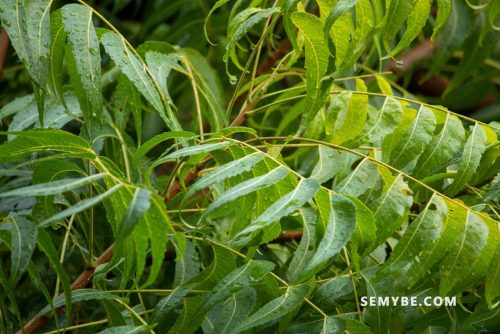
Azadirachta Indica
1. History and use
The Neem originates from India from where it was imported as trees from the avenues for its shade. As it resists drought it was used in the Sahel in reforestation. These are the most used leaves in traditional medicine in malaria, edema and rheumatism.
2. Description of the plant
It is a small tree 5 to 15 meters high. The leaves are alternate paripinnate, the small white flowers are clusters and very fragrant. The fruit is a small cylindrical drupe or almost oval. lt is light green and yellowish at maturity. The hard core is covered with a slightly sweet viscous pulp and its wood is never attacked by termites because of its bitterness.

3. Curative action
Many works have sought to explain the action pharmacological of this plant. An alcoholic extract of leaves and trunk bark has anti-inflammatory activity. A similarly, a freeze-dried aqueous extract of the leaves given by oral route to rats confirms this anti-inflammatory action. Seed oil contains many principles that are insecticides and can protect crops from predators.
4. Uses
Fever – Gastric Ulcers – Malaria
Boil 30 grams of leaves in one liter of water for half an hour Drinking half a liter a day.




